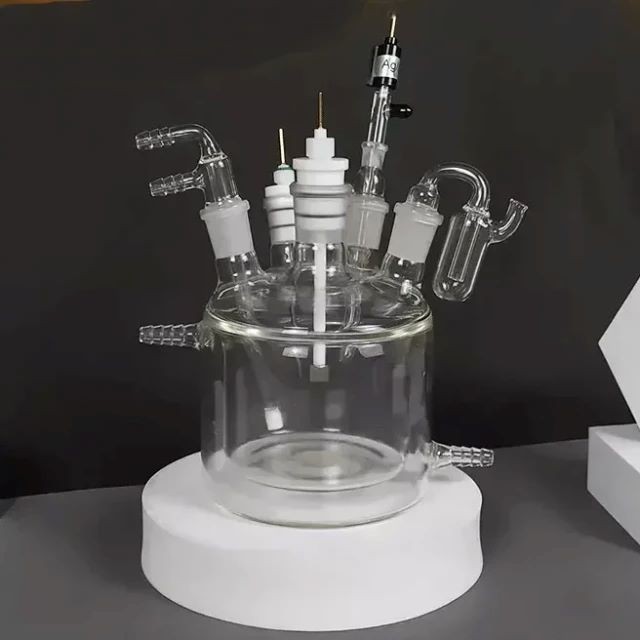
Electrochemical Consumables
Double Layer Five-Port Water Bath Electrolytic Electrochemical Cell
Item Number : ELCW
Price varies based on specs and customizations
$119.00 / set
- Specification
- 50ml ~ 500ml
- Applicable temperature range
- 0 ~ 60℃
- Sealed form
- Thread + Apron
- Material
- Boron glass + PTFE
Shipping:
Contact us to get shipping details Enjoy On-time Dispatch Guarantee.
Why Choose Us
Easy ordering process, quality products, and dedicated support for your business success.
Our Water Bath Electrolytic Cell features a double-layer, five-port design that provides excellent performance and versatility. It is crafted with top-of-the-line materials to ensure good sealing, corrosion resistance, and longevity. Our product comes with complete specifications, and we also offer customizations to meet specific needs.
Technical specifications
Five-port water-bath electrolytic cell
| Specification | 50ml ~ 500ml |
| Applicable temperature range | 0 ~ 60℃ |
| Sealed form | Thread + Apron |
| Material | Boron glass + PTFE |
| Electrolytic cell hole | Three electrode holes (6mm), two air holes (3mm), custom openings are available |
Detail & Parts


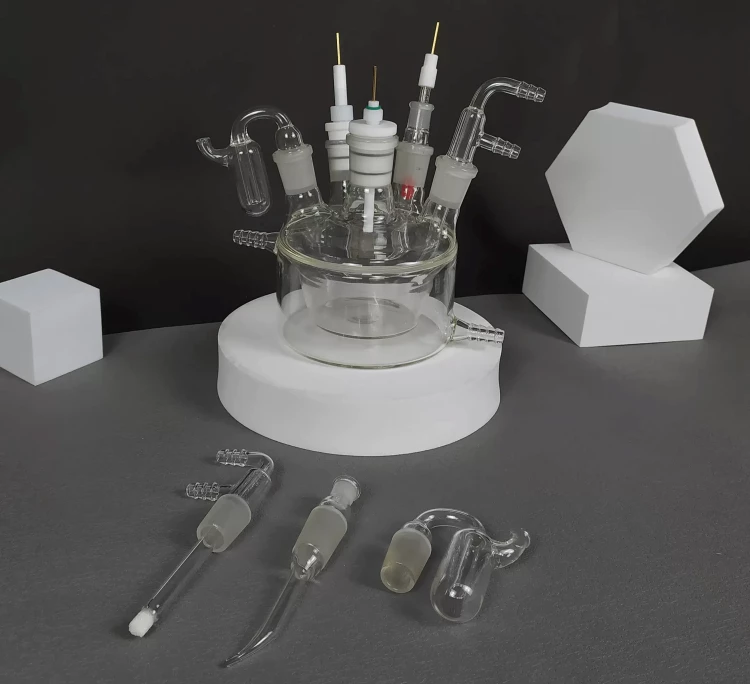
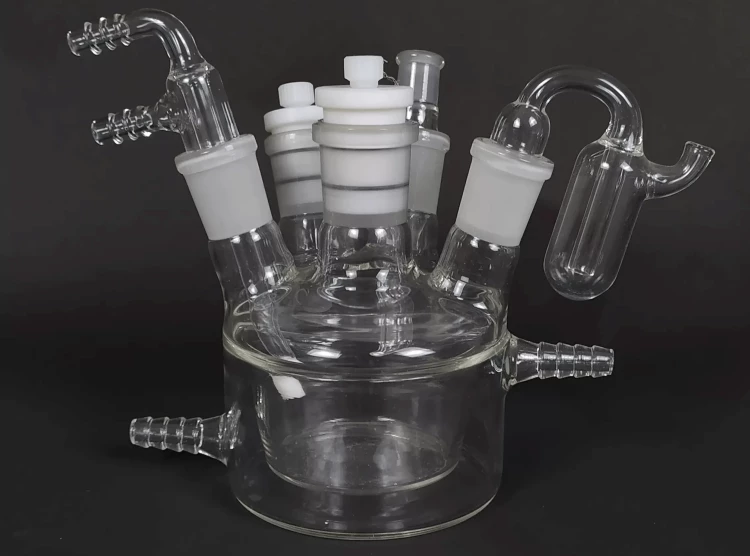

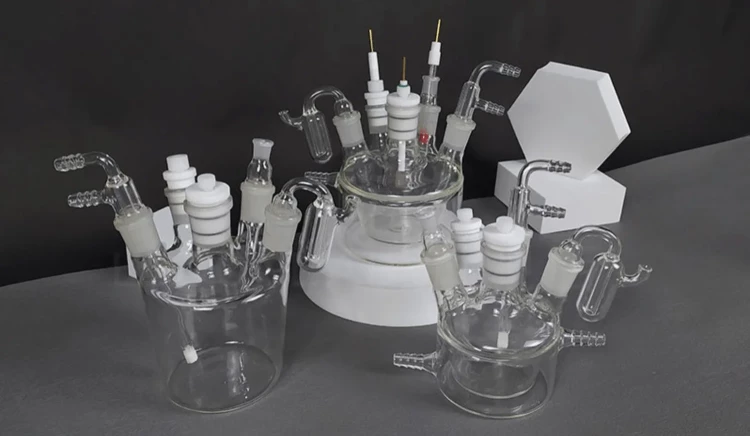
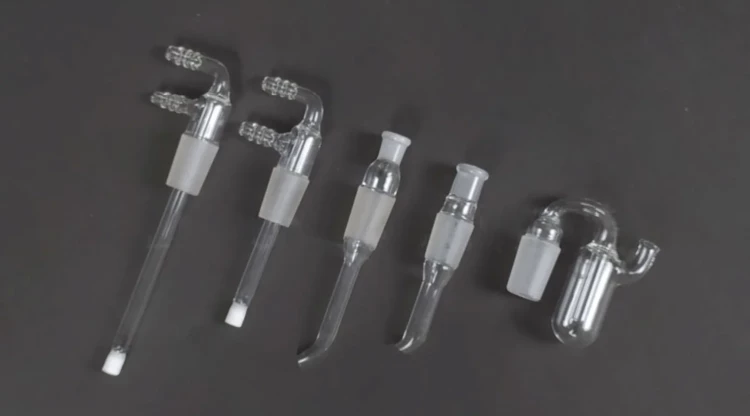
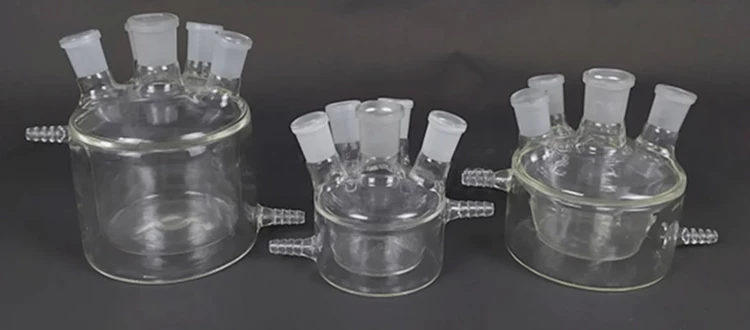
Operating steps

1. Our Sealed Electrolytic Cell comprises a sealing rubber ring, a sealing plug, a polytetrafluoroethylene cover, and a sturdy cell body for reliable performance.

2. During installation, simply insert the electrode and gas pipe into the electrolytic cell and attach the sealing ring for a secure fit.

3. To further secure the electrode, attach the sealing nut onto the air hole, squeeze the sealing ring, and tighten the nut securely.

4. Once installed, the electrolytic cell is ready to use.
Designed for You
KinTek provide deep custom made service and equipment to worldwide customers, our specialized teamwork and rich experienced engineers are capable to undertake the custom tailoring hardware and software equipment requirements, and help our customer to build up the exclusive and personalized equipment and solution!
Would you please drop your ideas to us, our engineers are ready for you now!
4.9 / 5
The water bath electrolytic cell arrived promptly, making my lab work more efficient. The quality is top-notch, and I'm confident in its durability.
4.7 / 5
The product is worth every penny! Its construction and design are impressive, ensuring accurate and reliable results for my experiments.
4.8 / 5
The water bath electrolytic cell is a game-changer for my lab. Its technological advancements have simplified complex procedures, making my work more enjoyable.
4.6 / 5
I'm amazed by the product's quality. It's a solid investment for my lab, and the customer service is exceptional.
4.9 / 5
The water bath electrolytic cell is a must-have for any lab. Its construction is sturdy, and the design allows for easy maintenance.
4.7 / 5
The delivery was surprisingly fast, and the product exceeded my expectations. I highly recommend it for labs seeking precision and efficiency.
4.8 / 5
The water bath electrolytic cell is a testament to innovation. Its features have streamlined my lab processes, and the results are remarkable.
4.6 / 5
I'm impressed with the product's durability. It's been a reliable workhorse in my lab, handling demanding experiments with ease.
4.9 / 5
The water bath electrolytic cell is a technological marvel. It has transformed my lab, making experiments more efficient and accurate.
4.7 / 5
The product's value for money is unbeatable. It's a cost-effective solution that has improved the productivity of my lab significantly.
4.8 / 5
The customer service team is incredibly responsive and helpful. They went above and beyond to ensure my satisfaction with the product.
4.6 / 5
The water bath electrolytic cell seamlessly integrates into my existing lab setup. Its compatibility has saved me time and resources.
4.9 / 5
The product's design is user-friendly and intuitive. Even new lab technicians can operate it effortlessly, reducing training time.
4.7 / 5
The water bath electrolytic cell is a valuable addition to my lab. It has enhanced the accuracy and precision of my experiments, leading to groundbreaking discoveries.
4.8 / 5
The product's versatility is remarkable. It accommodates various experimental setups, making it an indispensable tool for diverse research projects.
4.6 / 5
The water bath electrolytic cell is an excellent investment for any lab. Its durability and reliability make it a long-term asset.
4.9 / 5
I highly recommend the water bath electrolytic cell. Its exceptional performance and innovative features have revolutionized my laboratory work.
REQUEST A QUOTE
Our professional team will reply to you within one business day. Please feel free to contact us!
Related Products

Double-Layer Water Bath Electrolytic Electrochemical Cell
Discover the temperature-controllable electrolytic cell with a double-layer water bath, corrosion resistance, and customization options. Complete specifications included.

PTFE Electrolytic Cell Electrochemical Cell Corrosion-Resistant Sealed and Non-Sealed
Choose our PTFE Electrolytic Cell for reliable, corrosion-resistant performance. Customize specifications with optional sealing. Explore now.
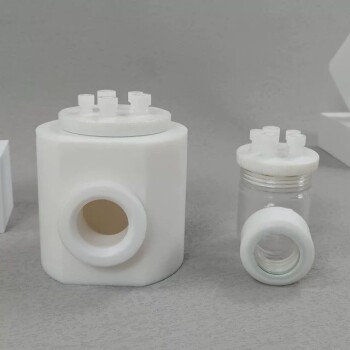
Side Window Optical Electrolytic Electrochemical Cell
Experience reliable and efficient electrochemical experiments with a side window optical electrolytic cell. Boasting corrosion resistance and complete specifications, this cell is customizable and built to last.
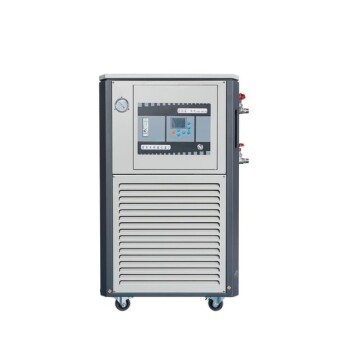
5L Heating Chilling Circulator Cooling Water Bath Circulator for High and Low Temperature Constant Temperature Reaction
KinTek KCBH 5L Heating Chilling Circulator - Ideal for labs and industrial conditions with multi-functional design and reliable performance.

Glassy Carbon Electrochemical Electrode
Upgrade your experiments with our Glassy Carbon Electrode. Safe, durable, and customizable to fit your specific needs. Discover our complete models today.

Glassy Carbon Sheet RVC for Electrochemical Experiments
Discover our Glassy Carbon Sheet - RVC. Perfect for your experiments, this high-quality material will elevate your research to the next level.
Related Articles

The Architecture of Control: Why the Five-Port Cell is More Than Glassware
Maximize experimental precision with the five-port water bath electrolytic cell. Master temperature, potential, and atmosphere for reproducible data.

Exploring the Multifunctional Electrolytic Cell Water Bath: Applications and Benefits
Discover the versatile applications of multifunctional electrolytic cell water baths in various industries. Learn about their benefits, components, and how they facilitate chemical reactions and temperature control.

The Invisible Architecture of Accuracy: Optimizing the Five-Port Electrolytic Cell
Master the critical pre-use protocols for five-port water bath electrolytic cells. Learn how meticulous preparation ensures reproducible electrochemical data.

The Architecture of Precision: Mastering the Five-Port Water Bath Electrolytic Cell
Mastering the electrolytic cell is not just about chemistry; it is about discipline. Learn the systematic approach to preparation, operation, and maintenance.

The Fragile Vessel of Truth: A Maintenance Manifesto for Electrolytic Cells
Data integrity relies on equipment health. Discover the psychological and technical art of maintaining five-port electrolytic cells for reproducible science.

The Architecture of Precision: Mastering Electrolytic Cell Maintenance
Reliable data starts with disciplined maintenance. Discover the psychological and technical approach to preserving electrolytic cells for peak performance.

The Architecture of Reaction: Selecting the Right Electrolytic Cell Body
Discover how cell volume and sealing impact electrochemical data. Learn to balance scarcity, scale, and sensitivity with the right lab equipment choices.

The Art of Resistance: Why Your Electrolytic Cell Needs Breathing Room
Short circuits in electrolytic cells aren't just accidents; they are geometry failures. Learn how to control the electrical path and protect your lab equipment.

The Architecture of Precision: Why Your Electrolytic Cell Specs Matter More Than You Think
Discover the critical logic behind electrolytic cell specifications. From aperture geometry to volume trade-offs, learn how the right vessel defines experimental success.

The Glass Heart of the Experiment: Mastering the Electrolytic Cell
Master the art of handling electrolytic cells. Learn the critical balance between physical fragility, chemical safety, and operational precision.

The Silent Dialogue: Mastering Control in Electrolytic Cells
Electrolysis is a non-spontaneous act requiring precise control. Learn to interpret the interplay of voltage, current, and physical phenomena for safer lab results.

The Glass Heart of the Experiment: Precision Through Systematic Care
Routine maintenance of double-layer electrolytic cells isn't just cleaning—it's calibration. Discover the systematic protocol for reproducible electrochemical data.